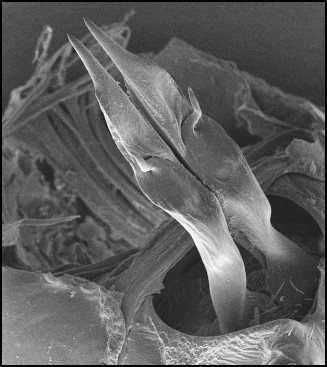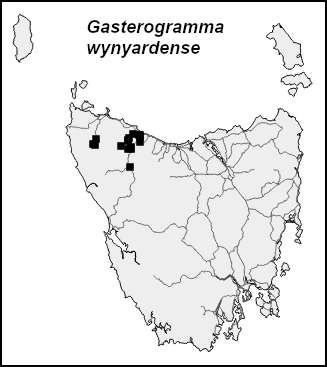Polydesmida: Dalodesmidae: Gasterogramma

Gasterogramma austrinum Mesibov, 2003 (image by Reiner Richter)
The eight species of Gasterogramma are all H+20 Tasmanian endemics. They are mainly forest-dwelling, burrowing millipedes which are more likely to be found in the soil than in leaf litter or rotting wood. Adults are up to 20 mm long, and colour in different species ranges from pinkish white to dark, mottled purple-brown. The same colour variation is found in the one widespread species G. psi, which is also the only Gasterogramma with a "harlequin" pattern of large dark lateral spots on a light background (see below).
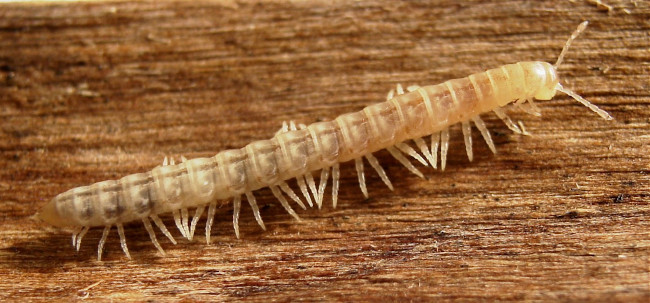
Gasterogramma plomleyi Mesibov, 2003
Gasterogramma species have very strong-smelling defensive secretions, earning them the nickname "stinky pinkies". An analysis published in 2018 found that secretions in the six Gasterogramma species tested were various aliphatic ketones. Componds of this kind had not previously been detected in millipede secretions, and the principal component of the G. rusticum secretion was a new natural product (not previously found in nature).
The genus Gasterogramma is almost entirely confined to those parts of Tasmania with an annual rainfall of at least 1000 mm, but all Gasterogramma species seem to tolerate habitat disturbance. Gasterogramma psi, G. rusticum and G. wynyardense are abundant in pine plantations, and G. austrinum is abundant in eucalypt regrowth arising from clearfall-and-burn silviculture.
The distributions of G. austrinum and G. imber are tightly parapatric in the southwest. There is a spot on the Strathgordon Road and another off the Scotts Peak Road where the overlap zone is known to be less than 50 m wide.
Gasterogramma austrinum Mesibov, 2003
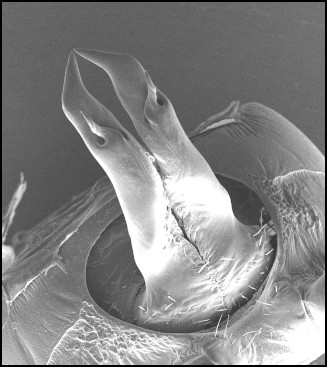
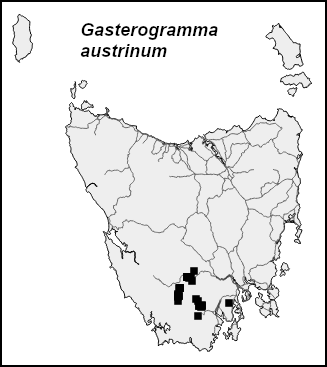
Gasterogramma extremum Mesibov, 2003
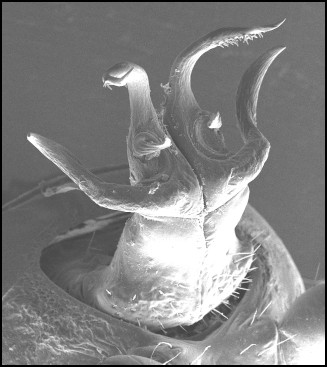
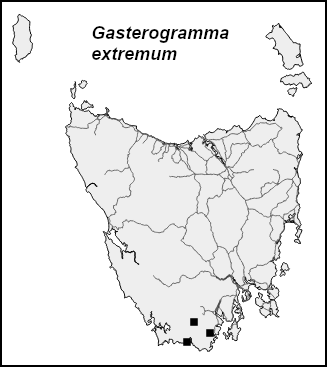
Gasterogramma imber Mesibov, 2003
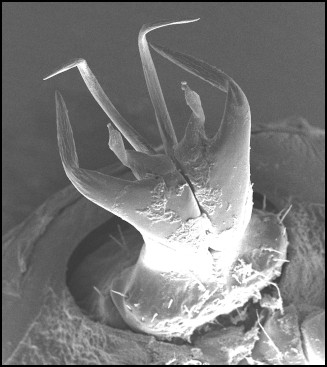
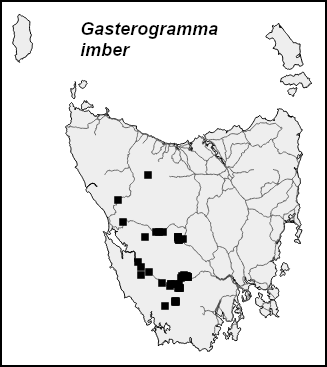
The L-shaped gonopod components in the gonopod image have spread apart as a result of drying. In live and alcohol-preserved specimens these components are touching and parallel.
Gasterogramma plomleyi Mesibov, 2003
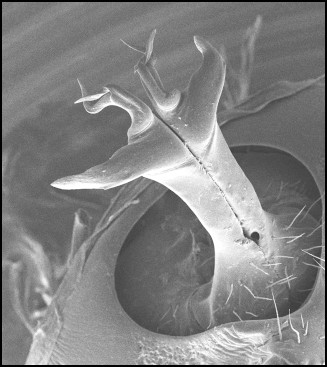
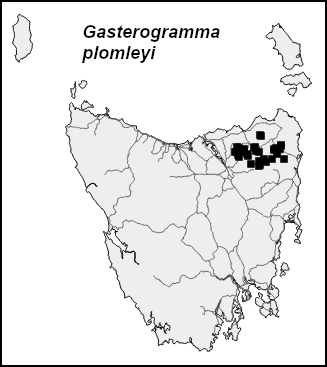
Gasterogramma psi Jeekel, 1982
This is not only the most widespread and abundant Gasterogramma, it is also the most variable. Gonopods of males from four sites across the range are shown below, together with the distinctive "harlequin" colour form. The dark spots surround the ozopores.
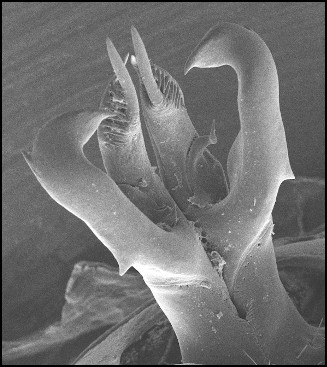
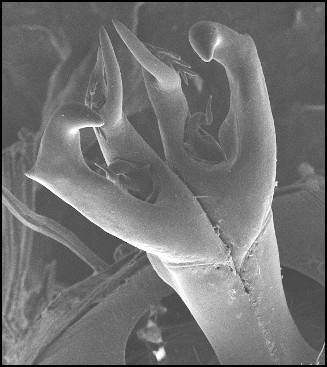
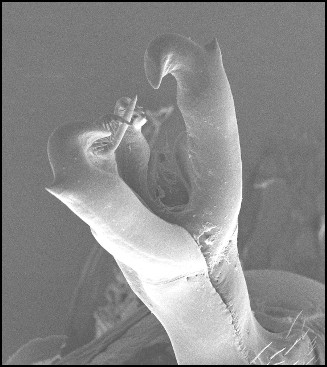
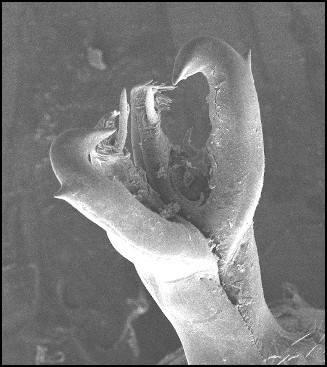
Gonopod variation: Gasterogramma psi specimens from "Woolnorth" (top left), Notley Gorge (top right), Henty River area (bottom left) and Coles Creek in central Tasmania (bottom right).
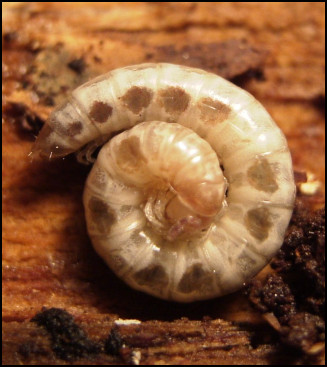
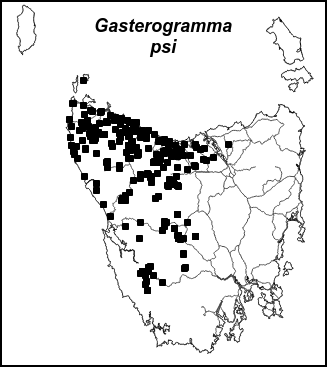
"Harlequin" G. psi are mainly found on the North-West Coast.
Gasterogramma rusticum Mesibov, 2003
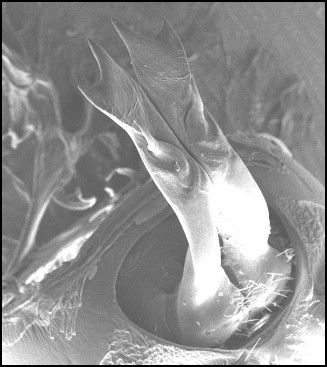
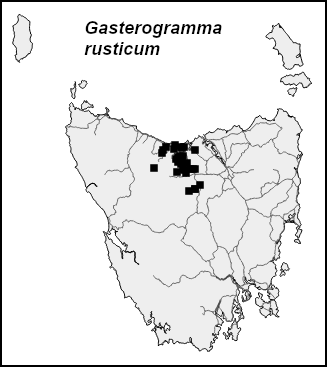
Gasterogramma tarkinense Mesibov, 2003
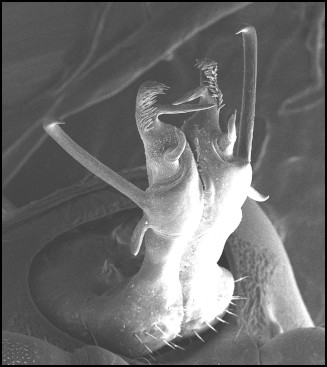
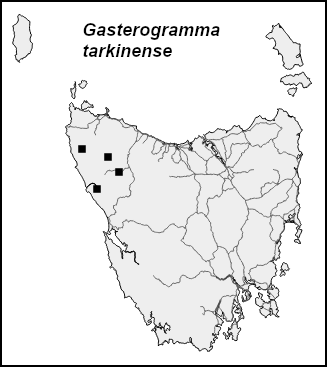
Gasterogramma wynyardense Mesibov, 2003
